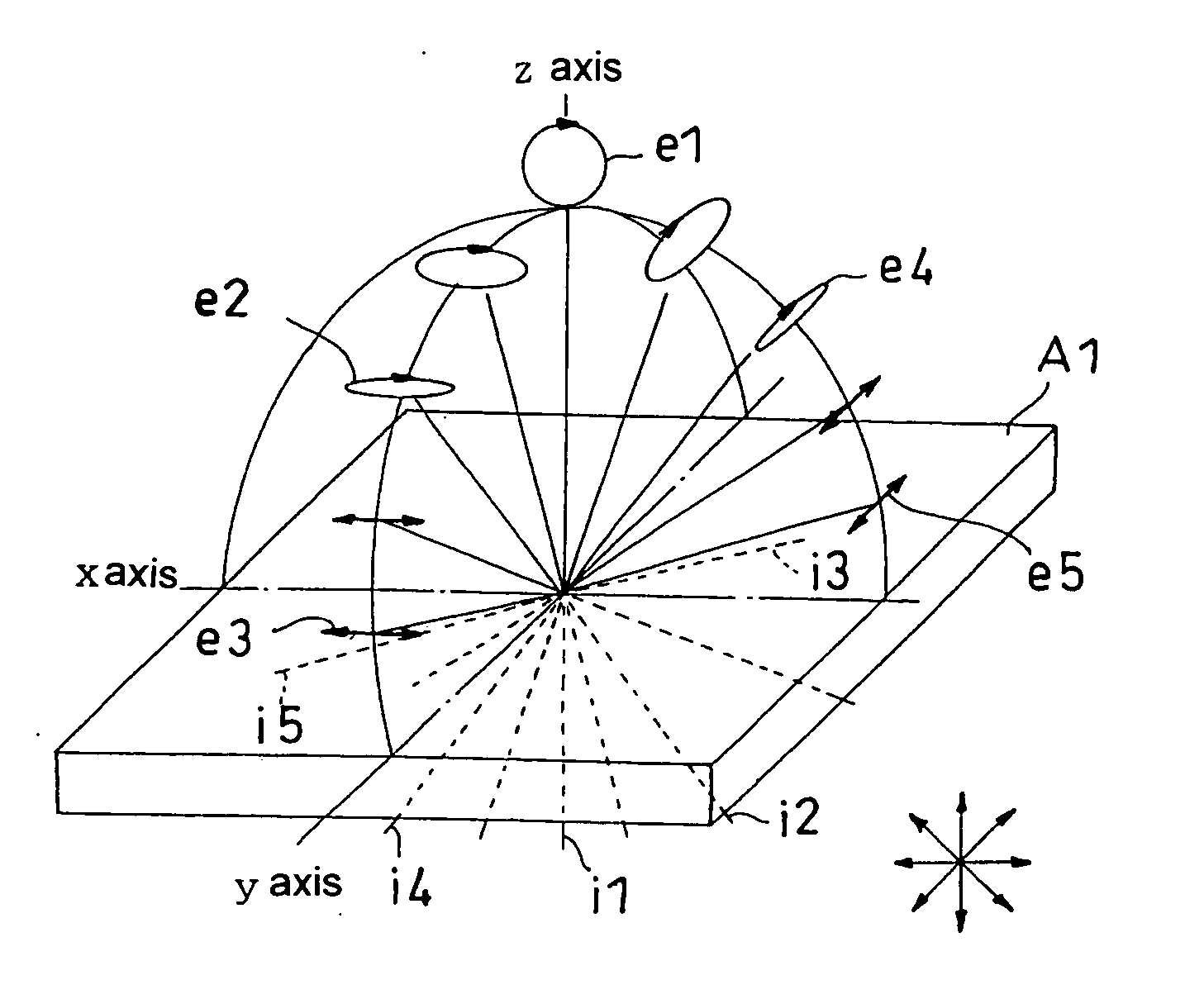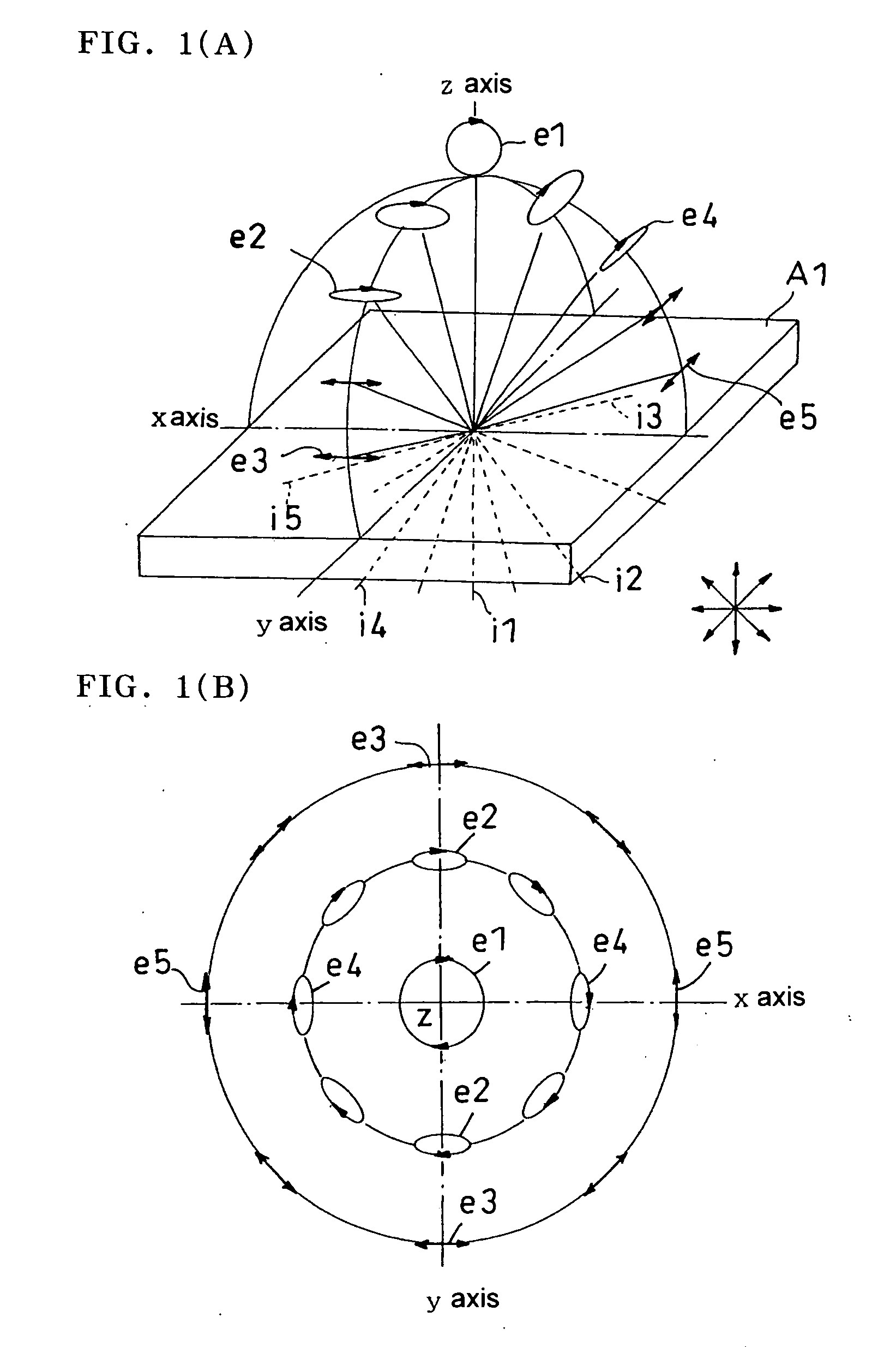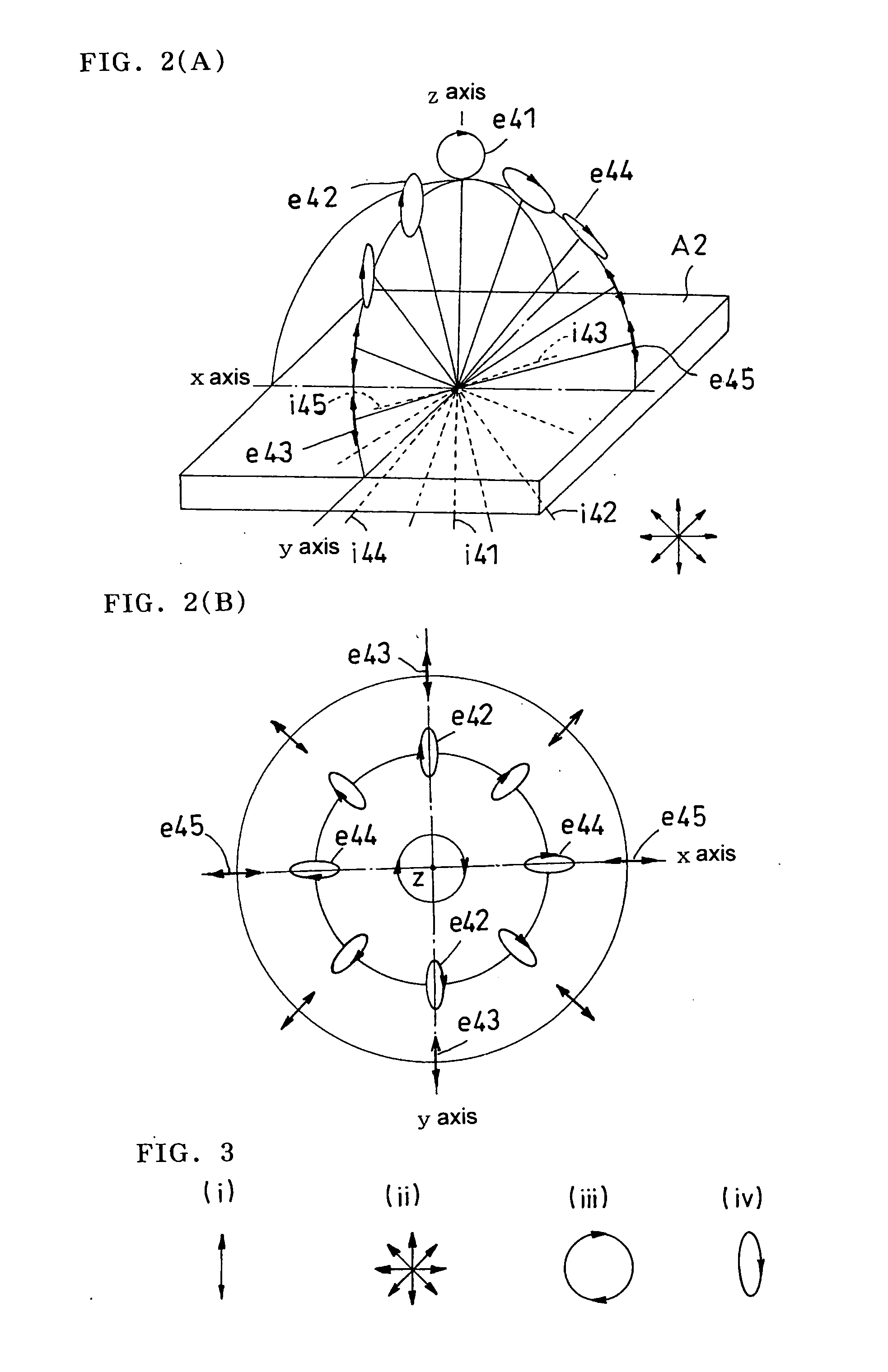Optical element, light condensation backlight system, and liquid crystal display
a backlight system and liquid crystal display technology, applied in the field of optical elements, light condensation backlight systems, liquid crystal displays, can solve the problems of high cost, high technical difficulty, and difficult fabrication of such elements, and achieve good shielding direction effect, no absorption loss, and high transmittance.
- Summary
- Abstract
- Description
- Claims
- Application Information
AI Technical Summary
Benefits of technology
Problems solved by technology
Method used
Image
Examples
example 1
(Polarizing Element (A))
[0242] Six kinds of cholesteric liquid crystal polymers with selective reflection central wavelengths of 420 nm, 460 nm, 510 nm, 580 nm, 660 nm and 710 nm were prepared based on the specification of EP No. 0834754 A1.
[0243] A cholesteric polymer was manufactured with a polymerizable nematic liquid crystal monomer A expressed by the following chemical structure 2:
and a polymerizable chiral agent B expressed by the following chemical structure 3 in the following proportions (in wt ratios)
[0244] selective reflection central wavelength: monomer A / chiral agent B (mixing ratio): selective reflection wavelength band (nm)
420 nm: 8 / 1430 to 460 nm460 nm: 9.2 / 1430 to 490 nm510 nm:10.7 / 1480 to 550 nm580 nm:12.8 / 1540 to 620 nm660 nm:14.7 / 1620 to 810 nm710 nm: 16 / 1660 to 880 nm
[0245] The liquid crystal mixture was dissolved into tetrahydrofuran to obtain a 33% solution, thereafter, the solution was purged with nitrogen in a circumstance at 60° C., then, a react...
example 2
(Polarizing Element (A))
[0258] A laminate made from cholesteric liquid crystals were obtained in a similar way to that in Example 1 with the exception that in Example 1, a polymerizable nematic liquid crystal monomer A and a polymerizable chiral agent B were used in the proportions (wt ratio) described below:
[0259] Selective reflection central wavelength: monomer A / chiral agent B (mixing ratio): selective reflection wavelength band (nm)
420 nm: 8 / 1400 to 460 nm460 nm: 9.2 / 1430 to 490 nm510 nm:10.7 / 1480 to 550 nm580 nm:12.8 / 1540 to 620 nm620 nm: 14 / 1580 to 750 nm
[0260] The laminate of the obtained cholesteric liquid crystals had a selective reflection function in the wavelength range of from 400 to 750 run. The laminate was indicated with (A1-2).
[0261] The polarizing element (A1-2) had a distortion rate in the front direction of about 0.65 and a distortion rate in a 60 degree oblique direction of about 0.03. Emitting light transmitted through the polarizing element (A1-2) was ...
example 3
(Polarizing Element (A))
[0264] A laminate made from cholesteric liquid crystals were obtained in a similar way to that in Example 1 with the exception that in Example 1, a polymerizable nematic liquid crystal monomer A and a polymerizable chiral agent B were used in the proportions (wt ratio) described below:
[0265] Selective reflection central wavelength: monomer A / chiral agent B (mixing ratio): selective reflection wavelength band (nm)
390 nm: 7 / 1400 to 460nm460 nm: 9.2 / 1430 to 490nm510 nm:10.7 / 1480 to 550nm580 nm:12.8 / 1540 to 620nm660 nm:14.7 / 1620 to 810nm850 nm: 20 / 1700 to 1000nm
[0266] The laminate of the obtained cholesteric liquid crystals had a selective reflection function in the wavelength range of from 400 to 1000 μm. The laminate was indicated with (A1-3).
[0267] The polarizing element (A1-3) had a distortion rate in the front direction of about 0.68 and a distortion rate in a 60 degree oblique direction of about 0.03. Emitting light transmitted through the polarizin...
PUM
| Property | Measurement | Unit |
|---|---|---|
| angle | aaaaa | aaaaa |
| thickness | aaaaa | aaaaa |
| reflection band width | aaaaa | aaaaa |
Abstract
Description
Claims
Application Information
 Login to View More
Login to View More - R&D
- Intellectual Property
- Life Sciences
- Materials
- Tech Scout
- Unparalleled Data Quality
- Higher Quality Content
- 60% Fewer Hallucinations
Browse by: Latest US Patents, China's latest patents, Technical Efficacy Thesaurus, Application Domain, Technology Topic, Popular Technical Reports.
© 2025 PatSnap. All rights reserved.Legal|Privacy policy|Modern Slavery Act Transparency Statement|Sitemap|About US| Contact US: help@patsnap.com



